Beginners' post menopause workout | Train at the gym or at home
These exercises are adaptable and can be done at any level with variations to add speed or weight to help your activity level and movement.
Benefits of post menopause exercises
This beginners' programme aims to build strength, improve your bone density and maintain a healthy body composition – helping to improve your posture and overall stability.
What you need
Grab a chair, a pair of water bottles or dumbbells and leave plenty of space to raise your arms to your side and overhead for some of the weight exercises.
Warm-up and stretches
Throughout this workout, you'll actively target your muscles and joints, so a warm-up involving a few easy stretches will prepare your body for the exercises ahead.
During menopausal years, you may suffer from joint pain due to increased inflammation and decreased muscle strength. A 10-minute mobility warm-up can vastly improve your range of motion, enabling you to perform some of the weight exercises more easily.
The workout
The workout splits into eight exercises. You can modify the exercises by adding additional weights or increasing the pace for a more challenging workout. Always include a mobility warm-up followed by a few cool-down stretches at the end to help avoid any injuries.
1. Squats
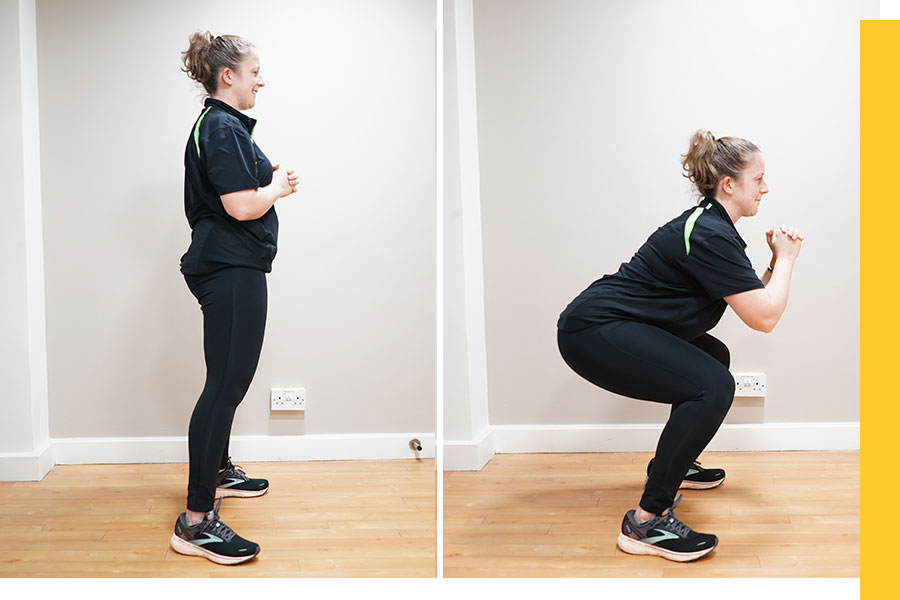
How to perform:
Stand straight with both feet hip-width apart.
2Tighten / brace your stomach muscles.
3Lower down, as if you're sitting in a chair.
4Straighten your legs to lift back up, not locking out the knees.
Safety Tip: avoid leaning forward and keep the back as straight as possible throughout the movement.
2. Overhead
Shoulder Press
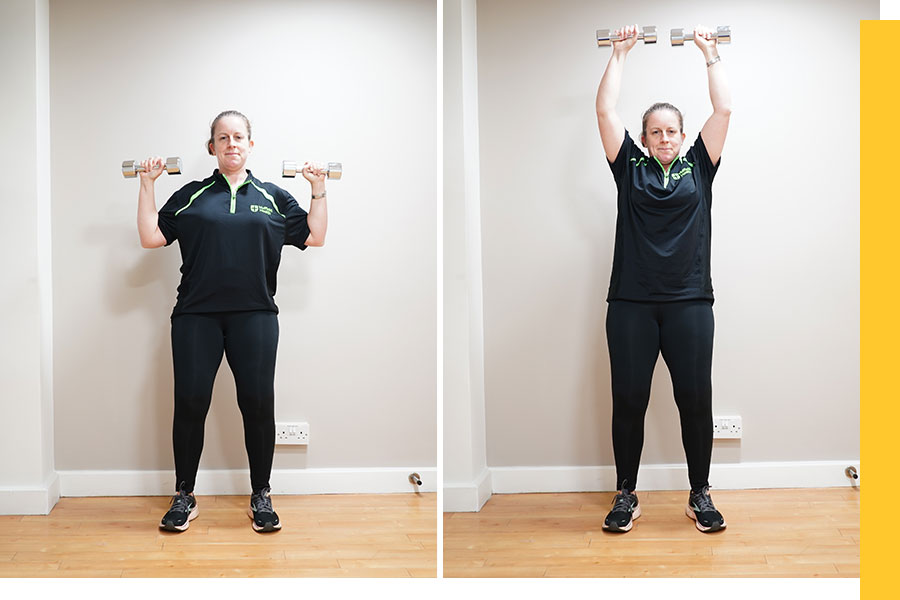
How to perform:
Stand straight with both feet hip-width apart.
2Exhale as you raise the weights (or water bottles) above your head in a controlled motion.
3Pause briefly at the top of the motion.
4Inhale and return the weights to your shoulders.
Safety Tip: avoid leaning forward and keep your back as straight as possible throughout the movement. Do not hyperextend your lower back.
3. Mountain
Climbers on a Chair
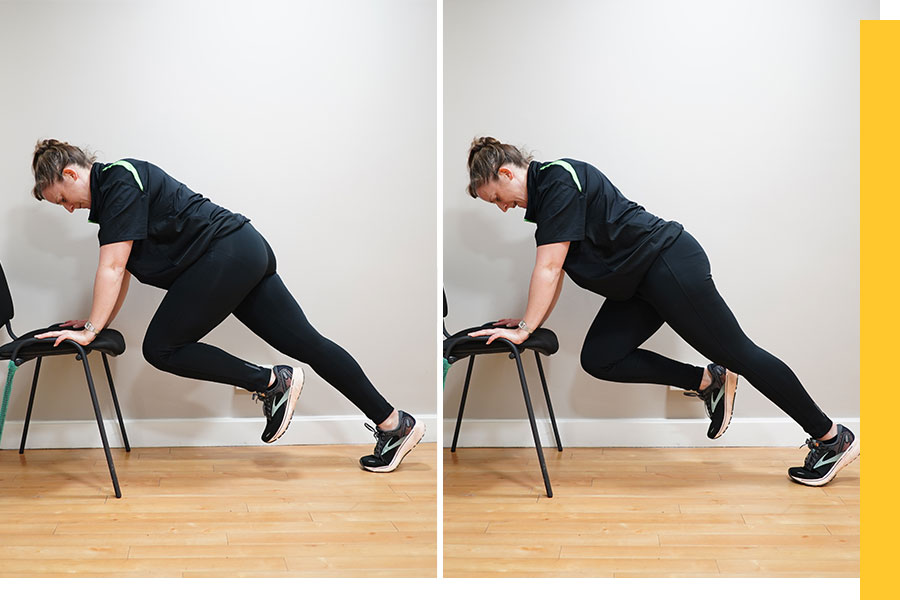
How to perform:
Your hands should be a shoulder-width apart, back flat, abs engaged and head in alignment.
2Pull your right knee into your chest as far as you can. Switch legs, pulling one knee out and bringing the other knee in.
3Keep your hips down and run your knees in and out as far as you can.
Safety Tip: avoid leaning forward and keep your back as straight as possible throughout the movement. Do not hyperextend your lower back.
4. Standing
Side Crunch
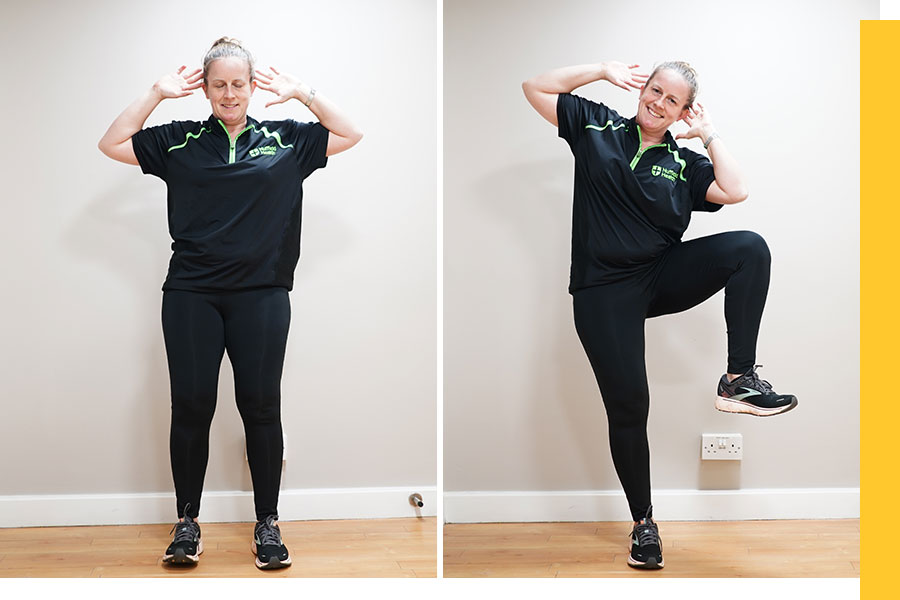
How to perform:
1Stand with your knees slightly bent, your feet hip-width apart, and place your hands behind your head.
2Shift your weight to the left leg, crunch to the right side, and bring your right knee up toward your elbow.
3Lower your right leg and return to the starting position.
Safety Tip: try to not overextend and keep to your bodies range, this will improve over time.
5. Lateral
Raise
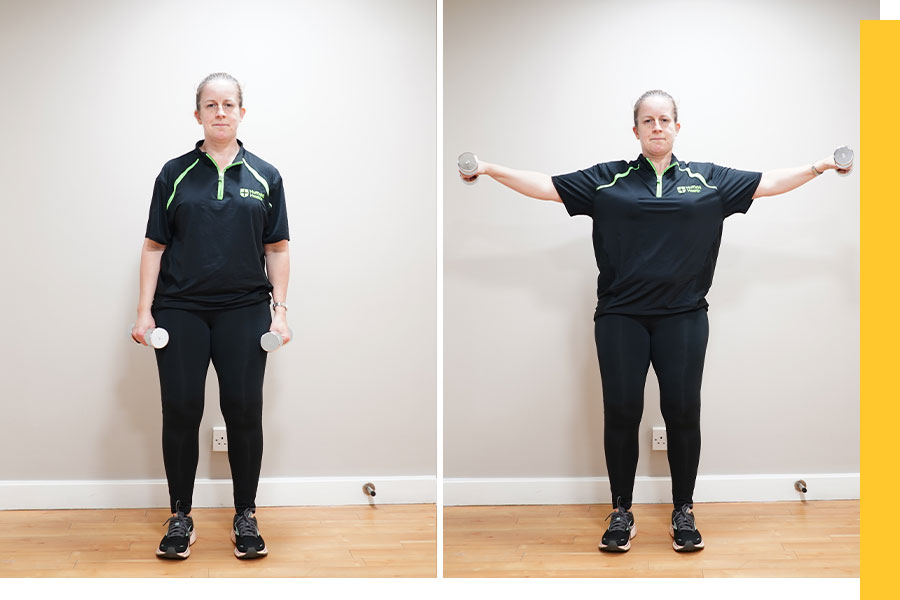
How to perform:
1Keep your shoulder blades pinned back.
2Slightly bend your elbows.
3Laterally raise the weights (or water bottles) slightly in front of your shoulders.
4Pause for a second when the weights (or water bottles) get to just below shoulder height.
5Take it slow and controlled on the way back down.
Safety Tip: avoid arching the lower back and extending your head to the ceiling when raising the arms.
6. High
Knees Marching on the Spot
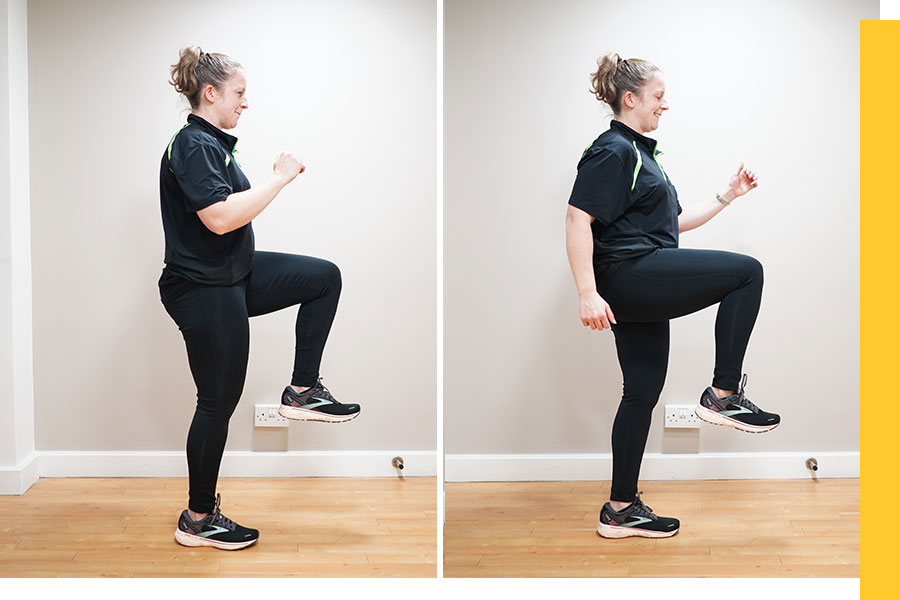
How to perform:
1Stand with your feet hip-width apart. Lift up your left knee to your chest.
2Switch to lift your right knee to your chest. Continue the movement, alternating legs and moving at a quicker pace as you progress.
Safety Tip: avoid slamming the foot on the ground, land toe to heel.
7. Split
Lunges
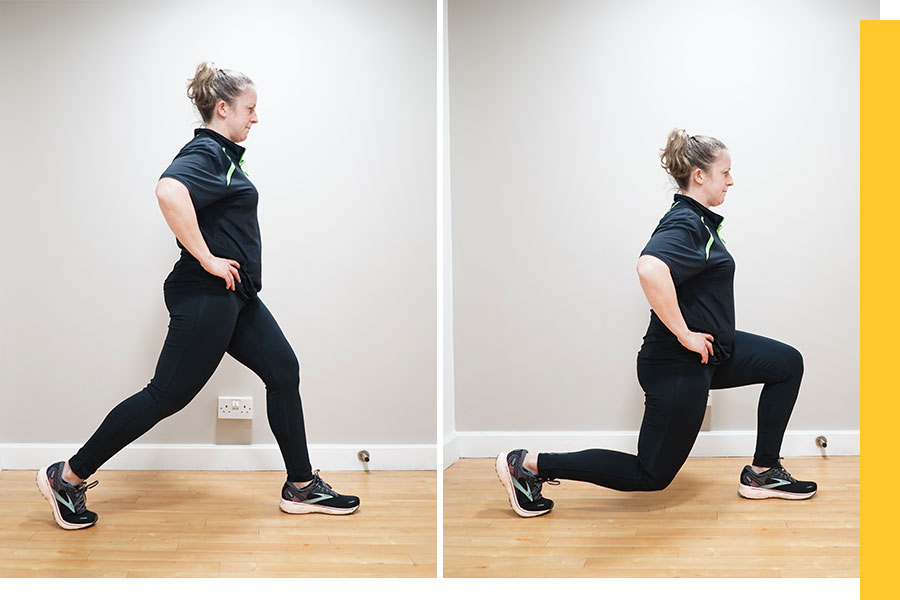
How to perform:
1Place your hands on your hips or one hand on a chair for balance.
2Slowly step back with your left leg with only your toes and balls of your feet touching the ground.
3Lower your left knee down towards the ground until your knee gets to ninety degrees.
4Straighten your left leg back up, pushing through the left toes and the right forward foot and repeat the movement.
Safety Tip: avoid fast movements, use a chair to hold on to if you feel unstable and progress as you practise more.
8. Bicep
Curls
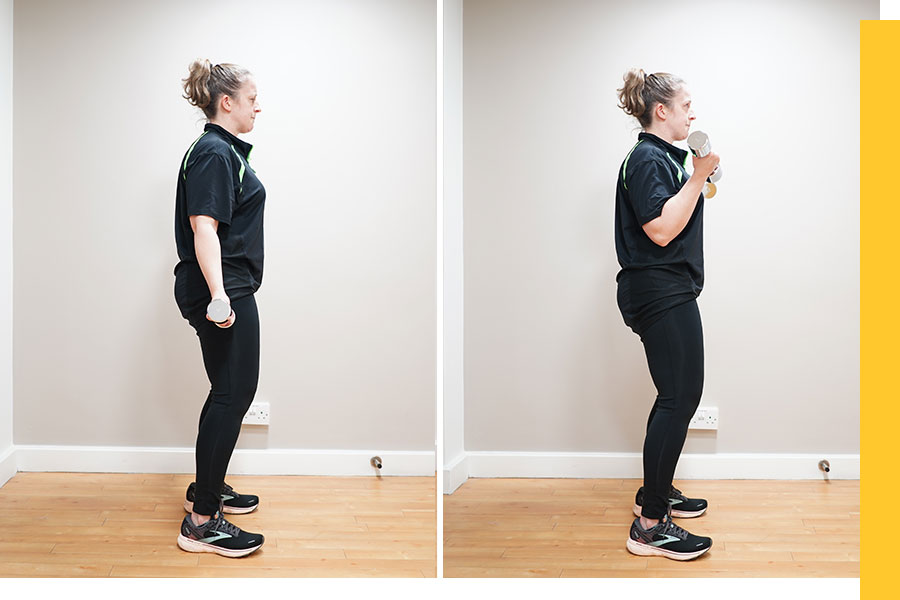
How to perform:
1Stand by holding a weight (or water bottle) in each hand with your arms hanging by your sides.
2Ensure your elbows are close to your torso and your palms facing forward.
3Keeping your upper arms stationary, exhale as you curl the weights (or water bottles) up to shoulder level while contracting your biceps.
Safety Tip: avoid leaning forward and keep the back as straight as possible throughout the movement.
Cool down
If you're post or peri menopausal – hormone cortisone (stress hormone) can have a greater effect on your body in comparison to those exercising without menopausal symptoms.
A prolonged cool-down consisting of stretches and deep breathing is crucial as it helps to reduce stress hormone levels and get us back to daily lives without any issues.
Glossary:
RPE*: RPE stands for "Rating of Perceived Exertion." It is a subjective measure of how hard an individual feels like they are working during physical activity or exercise. Essentially, RPE is a way for individuals to rate their own level of exertion based on how difficult the activity feels to them, rather than relying solely on objective measures like heart rate or speed. RPE is often measured on a scale of 1-10, with 1 being very light activity (like walking) and 10 being maximum effort (like sprinting as fast as possible).
Last updated Thursday 23 March 2023
First published on Wednesday 22 March 2023

